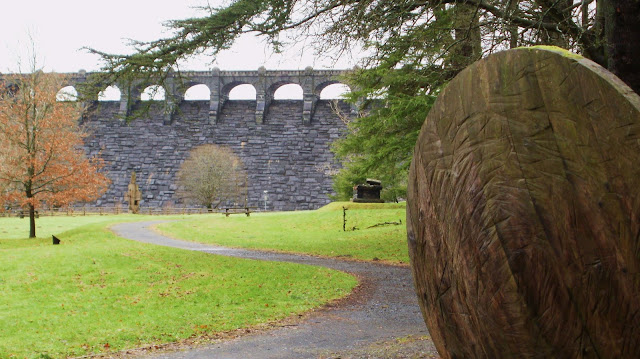
The large dam at Lake Vyrnwy, built between 1881 and 1889, was the first in Britain to be stone-built, earlier constructions being earth embankments. The side facing the reservoir, at the time the largest of its kind in Europe, is vertical, not inclined, and the dam is consequently of great mass in order to resist the pressure. Over half a million tons of stone go to make up a monolith 1,172 feet long, 84 feet from lake bed to overflow sill, 161 feet from foundations to top, and 120 feet thick at its base.

The openings between the dam's 33 arches allow surplus water to flow over the top - Vyrnwy was also the first large dam not to have a spillway at one end. The compensation water for the River Vyrnwy is carried through tunnels 70 feet long and 15 feet in diameter, one beneath each of the two towers, in which are housed the valve controls.

Created to supply Liverpool with water, Lake Vyrnwy is about 4½ miles long. In its depths are the remains of the village of Llanwddyn. 37 houses, ten farmhouses, three pubs, two chapels, and a church were knocked down. The residents, both living and dead, were relocated to a new village further down the valley. A sculpure park adorns the outwash plain beneath the dam. Take a bottle of Bombay Sapphire with you - it's made with Vyrnwy water.
No comments:
Post a Comment